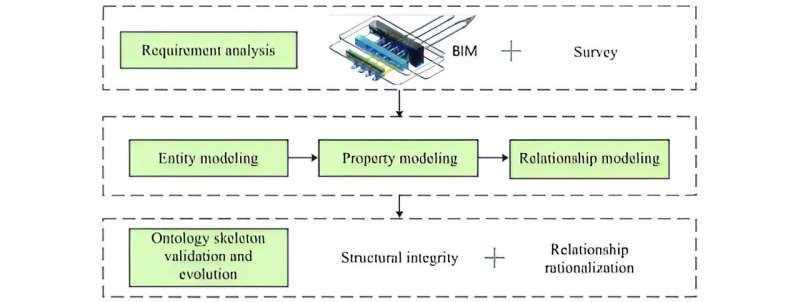
JULY 25, 2024 by Tsinghua University Press
Collected at: https://techxplore.com/news/2024-07-intelligent-ai-spatial-hydropower-underground.html
Designing the spatial arrangement of underground powerhouses involves numerous complex parameters and boundaries, requiring frequent reference to various cases and specifications. Traditional methods struggle to efficiently retrieve this information, leading to suboptimal designs and extended project timelines. Due to these challenges, there is a pressing need for a more intelligent and efficient approach to streamline the design process, enhance accuracy, and improve project management in hydropower engineering.
Researchers from Tianjin University, in collaboration with PowerChina Kunming Engineering Corporation Limited and other institutions, have developed a novel methodology for constructing a knowledge graph for the spatial arrangement of underground powerhouses. Published in the Journal of Intelligent Construction, the study demonstrates how this knowledge graph can enhance digital intelligent design and operation of hydropower facilities.
The study details a comprehensive process for constructing a knowledge graph to optimize the spatial arrangement of underground powerhouses. It begins with designing an ontology skeleton to represent the knowledge organization structure. Data is collected and processed using optical character recognition (OCR) technology and the THU Lexical Analyzer for Chinese (THULAC) to handle large volumes of unstructured information.
The extracted knowledge is stored in the Neo4j database, forming the basis of the knowledge graph. This graph is then used for intelligent querying and parameter recommendation, significantly enhancing design and operational efficiency. By enabling efficient retrieval and application of design knowledge, the knowledge graph addresses existing challenges in spatial arrangement, paving the way for improved accuracy and efficiency in hydropower engineering projects.
Dr. He Jia, a lead researcher from Tianjin University, stated, “The implementation of a knowledge graph in the design of underground powerhouses marks a significant step forward in the field of hydropower engineering. This approach not only improves the efficiency of design processes but also provides a robust foundation for future advancements in intelligent construction and operation.”
The application of this knowledge graph methodology extends beyond underground powerhouses, offering potential benefits for various fields of engineering that require complex spatial arrangements. By enabling more efficient retrieval and application of design knowledge, this approach can lead to significant cost savings, improved safety, and enhanced project management in large-scale construction projects. The continuous update capability of the knowledge graph ensures its long-term relevance and adaptability to evolving industry needs.
More information: Han Liu et al, Construction and application of a knowledge graph for the spatial arrangement of underground powerhouses, Journal of Intelligent Construction (2024). DOI: 10.26599/JIC.2024.9180026

Leave a Reply